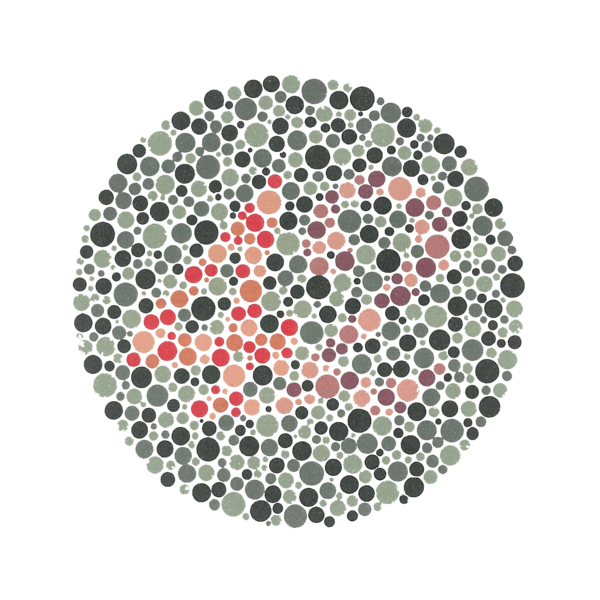Ishahara tests (Activity)

Dr. Shinobu Ishihara published his test for color perception in 1917 and this test is widely used to detect deficits in color perception. Below are examples of Ishahara plates. Record the number that you perceive in each plate and discuss with the rest of the class.

- As you go through the plates above, note the number that you see (if any).
- The genes for the Red and Green receptors are on the X-chromosome, who are most affected by mutation? Create a Punnet Square to illustrate how this works.
- Can women be color-blind for red/green?
- Humans have 3 color light receptors and have trichromatic vision. Some women are described as possibly having tetrachromatic vision (seeing 4 colors) and being able to discriminate colors invisible to the rest of us. Describe a mechanism for why this could happen. Why is there a possible gender bias?
Sequence links
- Opsin 1 Long Wave sensitive gene (OPN1LW) – red photoreceptor (human)
- Opsin 1 Medium Wave sensitive gene (OPN1MW) – green photoreceptor (human)
Tags: visual communication, integration of knowledge, cultural awareness, life-long learning




